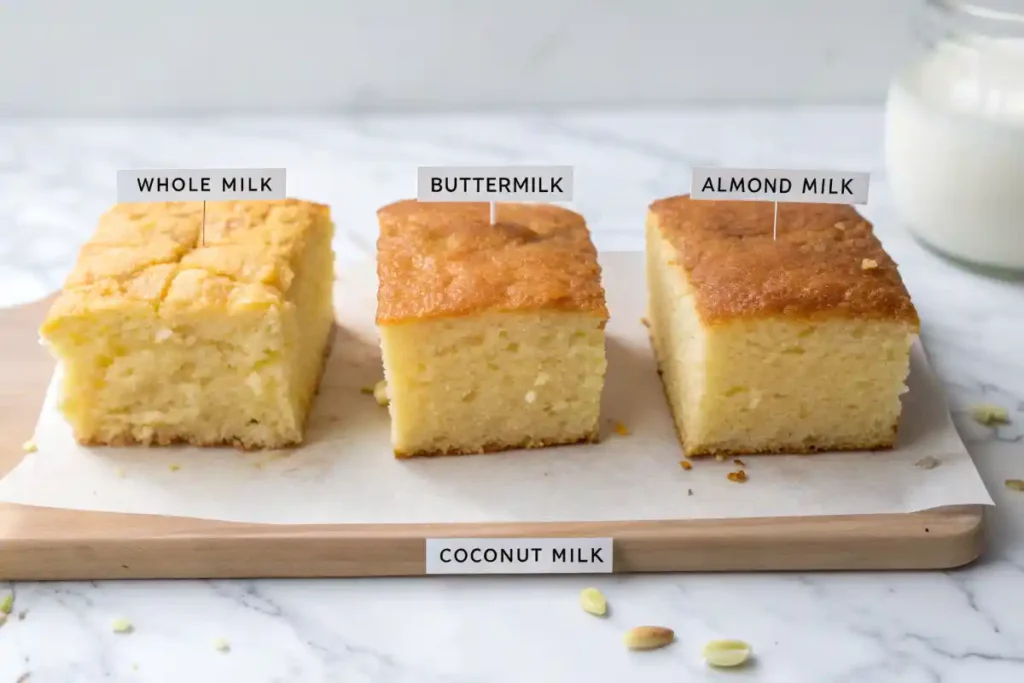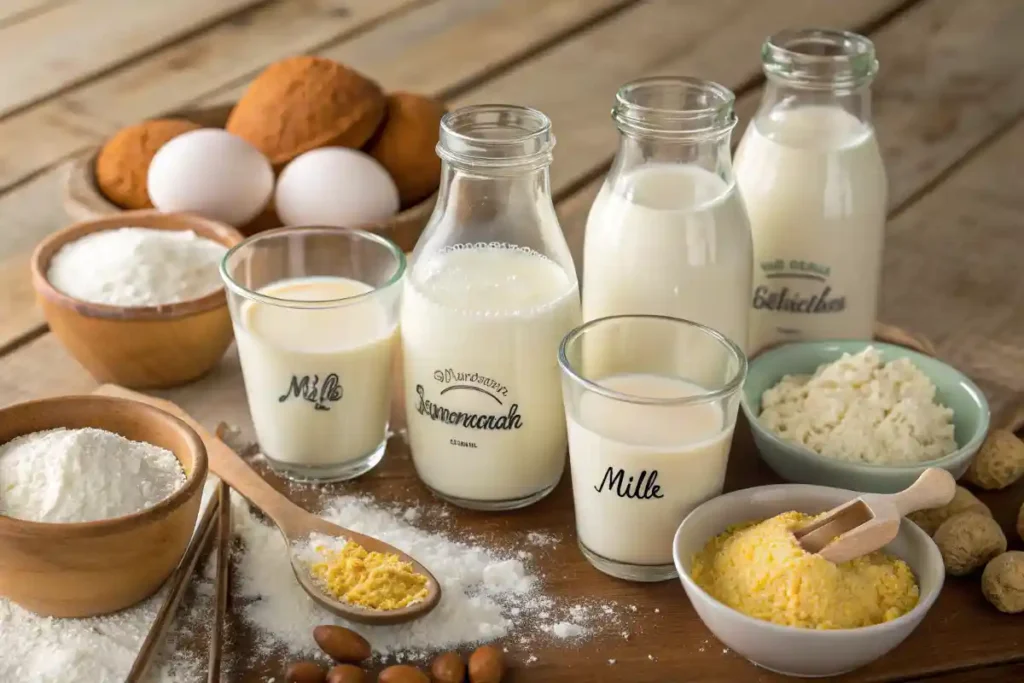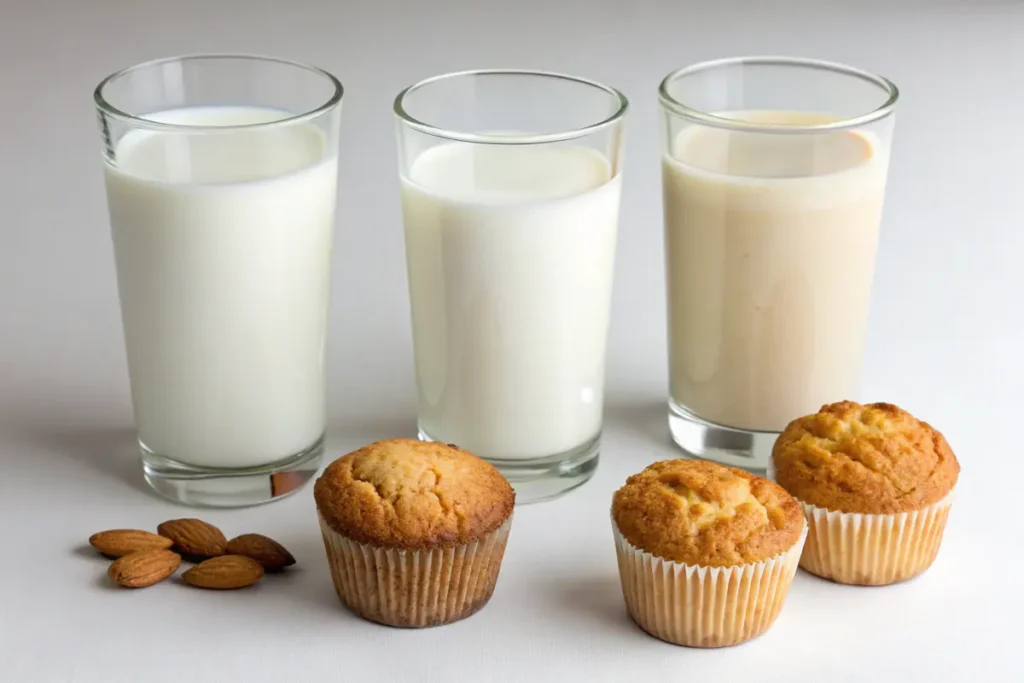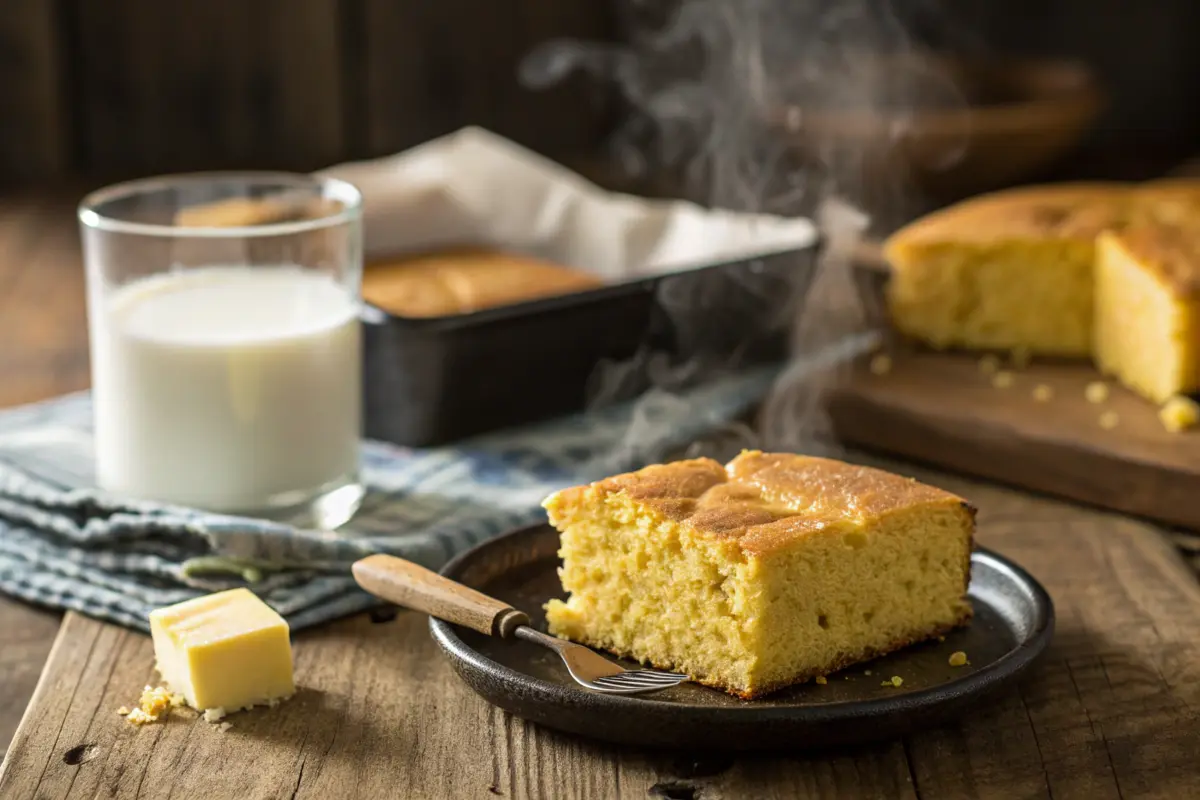Cornbread, that wonderfully comforting staple of Southern cuisine, can be surprisingly nuanced. It’s not just about throwing a few ingredients together; it’s about understanding how each component plays a crucial role in the final product. And, let’s be honest, one of the most critical elements is the liquid – more specifically, the milk.
Have you ever wondered, “What milk is best for cornbread?” Well, you’re not alone! From creamy whole milk to lighter plant-based options, the type of milk you choose can dramatically impact the texture, flavor, and overall success of your cornbread. That’s exactly what we’re diving into today. We’ll explore the vast landscape of milk options, from the classics to the unconventional, so you can make the best possible cornbread every single time. So, grab your apron and let’s get baking!
The Foundation: Understanding the Role of Milk in Cornbread
Why is Milk Essential in Cornbread Recipes?
Milk, at its heart, is more than just a liquid filler in your cornbread; it’s a vital ingredient that brings together all the other elements. You see, it’s the science of baking that comes into play here. First off, the water in milk hydrates the dry ingredients, which allows the flour (or in this case, cornmeal) to create structure and develop a proper crumb. Moreover, the proteins in milk contribute to that lovely, tender texture we all crave in a good piece of cornbread. The sugars in the milk, even in very small amounts, also contribute to browning and a richer overall flavor. Furthermore, milk plays a key role in the leavening action. By reacting with baking powder or baking soda, it helps to create tiny air pockets in the batter, resulting in a fluffier, lighter cornbread. It’s quite a superhero in the baking world, wouldn’t you say?
How does Different Milks Affect Cornbread Texture and Taste?

Different milks, with their varying compositions, significantly alter the final texture and taste of your cornbread. For instance, higher fat content, like in whole milk, tends to produce a richer and moister cornbread. This is because the fat molecules lubricate the flour proteins, preventing them from bonding too tightly, which in turn prevents dryness. The result is a tender crumb. Furthermore, the fat also carries flavor, and full-fat milk will impart a noticeable creamy note. On the other hand, low-fat milk or even plant-based alternatives, can create a lighter and sometimes drier cornbread due to their lower fat content. Similarly, some milks, like buttermilk, can give the cornbread a tangy flavor thanks to the lactic acid present. It’s quite interesting to see how something so simple as the choice of milk can make such a big impact! We’ll delve into specific choices in the next sections, so keep reading!
Whole Milk: The Classic Choice for Cornbread
Why Whole Milk Is Often Recommended for Cornbread
When you think about traditional cornbread recipes, you’ll often find that whole milk is the go-to option. And, there are very good reasons for that. Primarily, the higher fat content in whole milk plays a vital role in creating a moist and tender final product. This fat not only adds to that desired creamy texture, but it also helps to distribute the moisture evenly throughout the batter, preventing any dryness. Furthermore, the richness of whole milk contributes a deeper, more satisfying flavor, a classic cornbread flavor. It’s why, for many home bakers, using full-fat milk is a must. It helps with the overall browning of the cornbread as well, creating a lovely golden crust. So, in essence, whole milk provides a great foundation for achieving that perfect cornbread.
Potential Drawbacks of Using Whole Milk in Cornbread
However, it’s also important to acknowledge that whole milk isn’t without its downsides. For instance, the higher fat content that makes it so good also means it’s a bit more calorie-dense. Therefore, if you’re watching your fat intake, this might not be the ideal choice. Additionally, while that rich flavor is great for some, it can sometimes become too overpowering, especially if you’re trying to showcase other flavors in your cornbread, like the subtle sweetness of fresh corn or the warmth of spices. Additionally, using whole milk can result in a slightly richer cornbread that may not be everyone’s preference. What milk is best for cornbread really boils down to personal taste and dietary needs, wouldn’t you agree? Therefore, understanding both the advantages and disadvantages is helpful in making the best decision.
Exploring Alternative Milks for Cornbread: Dairy Options

2% Milk and 1% Milk: Lighter Options for Cornbread
If you’re looking for a slightly lighter option, 2% milk and 1% milk can be good alternatives to whole milk. Using these options does reduce the fat content, which can indeed impact the final texture of the cornbread. Generally, you’ll find that using 2% or 1% milk results in a cornbread that is not quite as rich, but also not as dense. Specifically, the crumb may be a little less tender and more airy. Additionally, the flavor will be noticeably milder compared to the more pronounced taste that whole milk offers. Therefore, these reduced-fat milks can work well in recipes where you prefer a less decadent cornbread. Ultimately, what milk is best for cornbread depends on what kind of outcome you’re aiming for. You might use a lighter version if your cornbread has other richness, like from cheese or bacon.

Skim Milk in Cornbread: Considerations
On the other hand, skim milk, with its almost nonexistent fat content, presents a unique set of challenges when baking cornbread. The lack of fat makes it more difficult to achieve that moist and tender texture, resulting in a cornbread that is very often on the drier side. Because of this, you may need to make adjustments to your recipe. For instance, adding a bit more oil or another liquid to compensate. Also, it’s important to consider how skim milk might lack the flavor depth of whole milk. Still, there may be scenarios where skim milk is a suitable choice for you, such as if you need to reduce the fat in the recipe as much as possible. But generally, using skim milk requires careful modifications for success in cornbread baking.
Evaporated Milk: A Concentrated Dairy Option
Another dairy option worth exploring is evaporated milk. Evaporated milk is essentially regular milk that has had a significant amount of water removed, resulting in a concentrated product with a higher fat and protein content than regular milk. Using evaporated milk in your cornbread can lead to a richer and denser outcome. The concentrated nature of evaporated milk lends a lovely depth to the flavor, and also helps to create a slightly chewier texture. It’s a great choice if you want a cornbread that is a little bit more substantial and packed with flavor. As long as you use it with enough water, evaporated milk can certainly give a very satisfactory result. You can also check out this recipe for Gluten-Free Cornbread which talks about wet ingredients.
Buttermilk: Tangy and Tender Cornbread
Finally, let’s not forget the wonderful buttermilk. Buttermilk is a cultured dairy product that’s well-known for its tangy taste. This tanginess isn’t just a flavor component, it also plays a role in the chemistry of baking. Specifically, the lactic acid in buttermilk reacts with baking soda to help create a tender and light cornbread. Furthermore, buttermilk adds moisture to the batter and a unique, pleasant flavor. Just make sure that you account for this flavor in your recipe. It’s especially perfect for those who appreciate a slight zest in their cornbread, making it a true contender when deciding what milk is best for cornbread.
Non-Dairy Milks: Vegan Options for Cornbread
Almond Milk: A Light Cornbread Option
For those looking for non-dairy alternatives, almond milk is a popular choice. Almond milk, with its delicate flavor and light consistency, brings a certain lightness to cornbread. As a result, cornbread made with almond milk tends to be less dense and has a more subtle flavor compared to those made with dairy milk. However, it’s important to note that almond milk is quite low in fat and protein. Therefore, the texture might be a bit more crumbly, and you might not get that desired tenderness you’d get from higher fat milks. Furthermore, because of its thin consistency, it may not provide as much moisture as other milks. Consequently, you may need to make adjustments to your cornbread recipe. Despite these drawbacks, almond milk is a great choice if you are trying to keep your recipe vegan and are okay with a lighter result.
Soy Milk: A Protein-Rich Non-Dairy Alternative
Another great option is soy milk, which brings both protein and moisture to the cornbread batter. Soy milk often works remarkably well in cornbread because it tends to have a creamier texture than almond milk, helping to create a smoother crumb. The protein in soy milk also contributes to the overall structure and helps the cornbread rise and hold its shape. Furthermore, many find that soy milk’s flavor is rather neutral, making it a nice substitute for dairy without imparting too much of its own distinct flavor. As a result, soy milk is a well-balanced choice for those who want a plant-based option without compromising too much on the traditional texture and flavor of cornbread. Therefore, it’s often a go-to option for many vegan bakers.
Oat Milk: Creamy Texture and Mild Flavor
Oat milk has risen in popularity recently, and for good reason. Its creamy texture and mild flavor make it an excellent alternative for baking. One of the great things about oat milk is that its higher fiber content can help in adding a bit more moisture to the batter, preventing it from drying out. However, it is important to remember that because oat milk tends to be a bit thicker, it is essential to measure carefully. Moreover, oat milk’s subtle flavor is often described as slightly sweet, which can complement cornbread quite nicely. Therefore, if you’re looking for a non-dairy option that delivers a moist and tender result, oat milk is a solid choice and a great answer when asking “what milk is best for cornbread“.
Coconut Milk: Adding a Tropical Twist to Cornbread
Lastly, let’s talk about coconut milk. When using coconut milk in cornbread, it really does bring a unique twist to the party. First and foremost, its distinct coconut flavor adds a tropical undertone. This may not be for everyone, but for those who enjoy that flavor, it can be a welcome addition to the cornbread. Furthermore, coconut milk, particularly the full-fat version, is very rich. Consequently, using it can create a very moist and decadent cornbread. Additionally, it is important to note that light coconut milk may not create as much moisture, but it still offers that unique taste. Therefore, coconut milk is a great option if you’re up for experimenting with new flavors. If you’re curious about other unique ingredients, you might want to check out our post about Differenet Types of Flour .
The Impact of Milk Temperature and Fat Content on Cornbread Baking
Does Temperature of Milk Affect Cornbread Results?
Interestingly, the temperature of your milk can indeed affect how your cornbread turns out. Generally, using room temperature milk is often recommended in baking. This is because room temperature milk helps ingredients combine more readily and efficiently. Specifically, it prevents the cold milk from solidifying any fats in the batter, and also ensures even mixing. That being said, sometimes you might want to use cold milk, perhaps to slow down the rising of the batter and prevent it from being overly puffy. Therefore, it’s all about understanding how temperature can influence your recipe, and choosing the appropriate temperature for your desired outcome.
Understanding Fat Content and Its Impact
Finally, it’s vital to recognize the impact of fat content in your chosen milk. As we’ve explored, higher fat contributes to a tender and moist cornbread, while lower fat often results in a drier and less decadent result. Thus, understanding the role of fat helps you make informed choices. For example, if you are using a skim milk, you might consider adding a bit of oil or butter to increase the fat content and improve the texture. Therefore, by keeping an eye on the fat content and the temperature, you can achieve that perfect cornbread, tailored to your specific preferences.
Choosing the Right Milk: A Summary and Recommendation
Recap: Which Milk Is Best for Your Cornbread?
After exploring various options, the question remains: what milk is best for cornbread? The answer depends on your preferences! For a rich, moist, and tender cornbread, whole milk is ideal. If you prefer a lighter result, try 2% milk or plant-based options like almond milk. Buttermilk will give you a tangy flavor, while coconut milk offers a unique, tropical twist. Choosing the right milk requires considering your taste and dietary needs. Ultimately, there’s no single “best” milk; it’s about balancing taste, texture, and your personal needs to find what works best for you and your cornbread.
The Best overall choice, with reasons.
Given all that, if I had to choose one option that strikes a great balance of flavor, texture, and consistency, I’d recommend whole milk as the best overall choice. The fat content provides that moisture and tenderness we all crave, and it also delivers a delicious depth of flavor that complements the cornmeal so well. Whole milk also results in that beautiful golden-brown crust, giving you that classic, perfect cornbread. Of course, plant-based milks are a great option for those who are vegan, but they often require recipe adjustments for the perfect outcome. Therefore, for most people, whole milk is likely to be the most foolproof starting point for baking delicious cornbread.
Part 7: Frequently Asked Questions (FAQs) on Milk for Cornbread
What is the best milk for moist cornbread?
For the moistest cornbread, whole milk or buttermilk are usually the top choices. Both of these milks have higher fat content, which helps with moisture retention. Therefore, they both contribute to that incredibly tender crumb.
Can you use water instead of milk in cornbread?
While you can use water in a pinch, it is generally not recommended. Water lacks the fat and protein that milk provides, which are vital for tenderness and flavor. Therefore, it will usually result in a drier and less flavorful product.
What is the difference between using whole milk and 2% milk in cornbread?
Whole milk will result in a richer, moister cornbread due to its higher fat content. 2% milk, on the other hand, will give you a lighter result with a slightly drier texture.
Does the type of milk affect how long cornbread lasts?
The type of milk can influence moisture levels, which can have an impact on how long cornbread stays fresh. Higher fat milks generally lead to a more moist cornbread that may retain its freshness longer than those made with lower fat milks.

